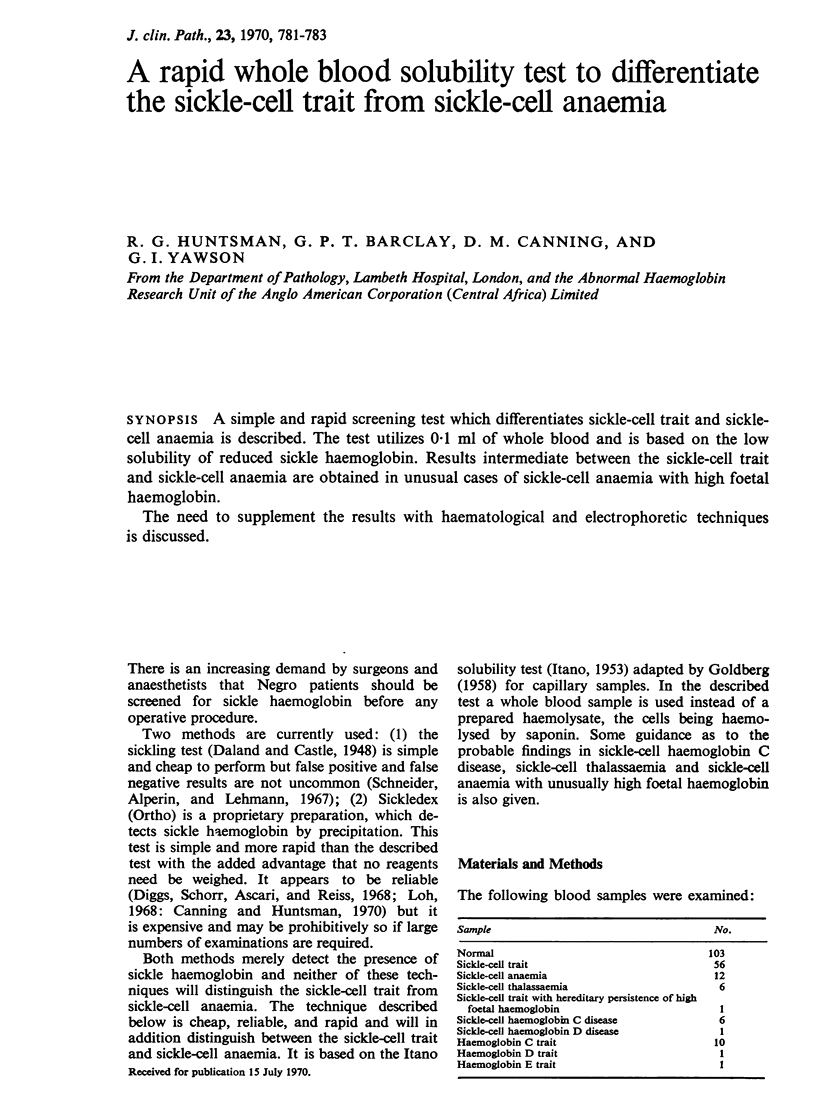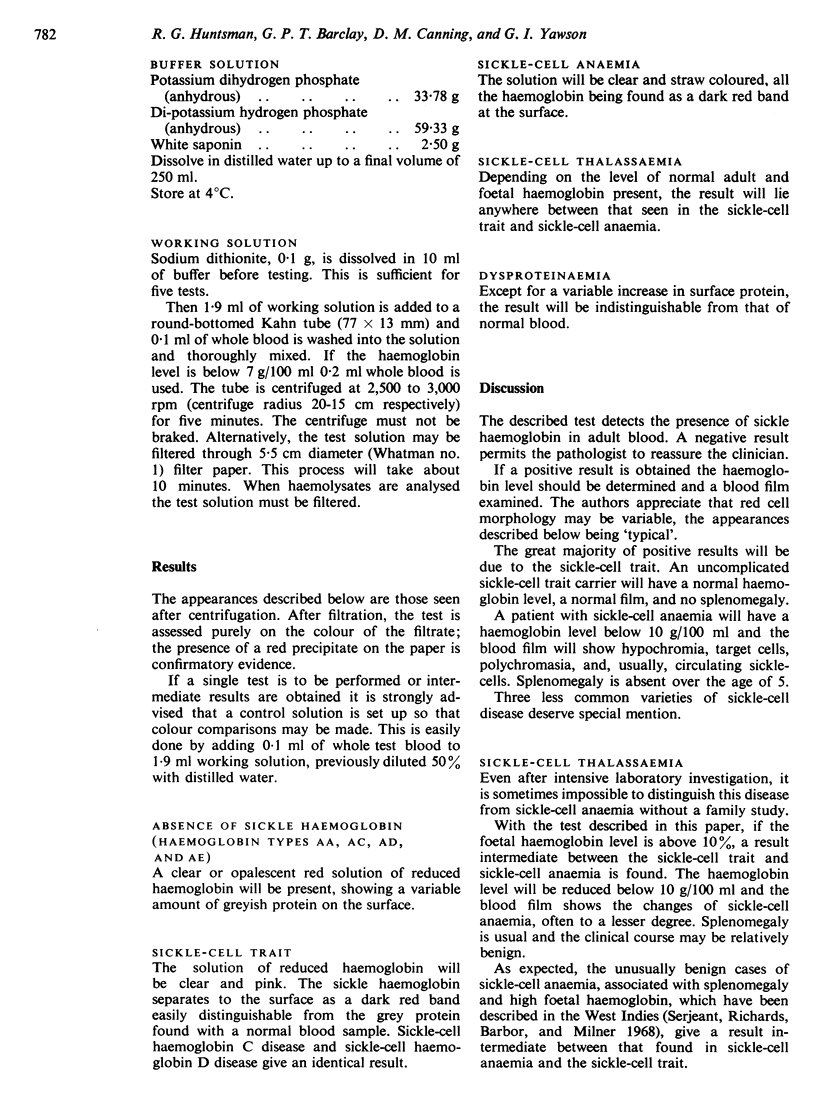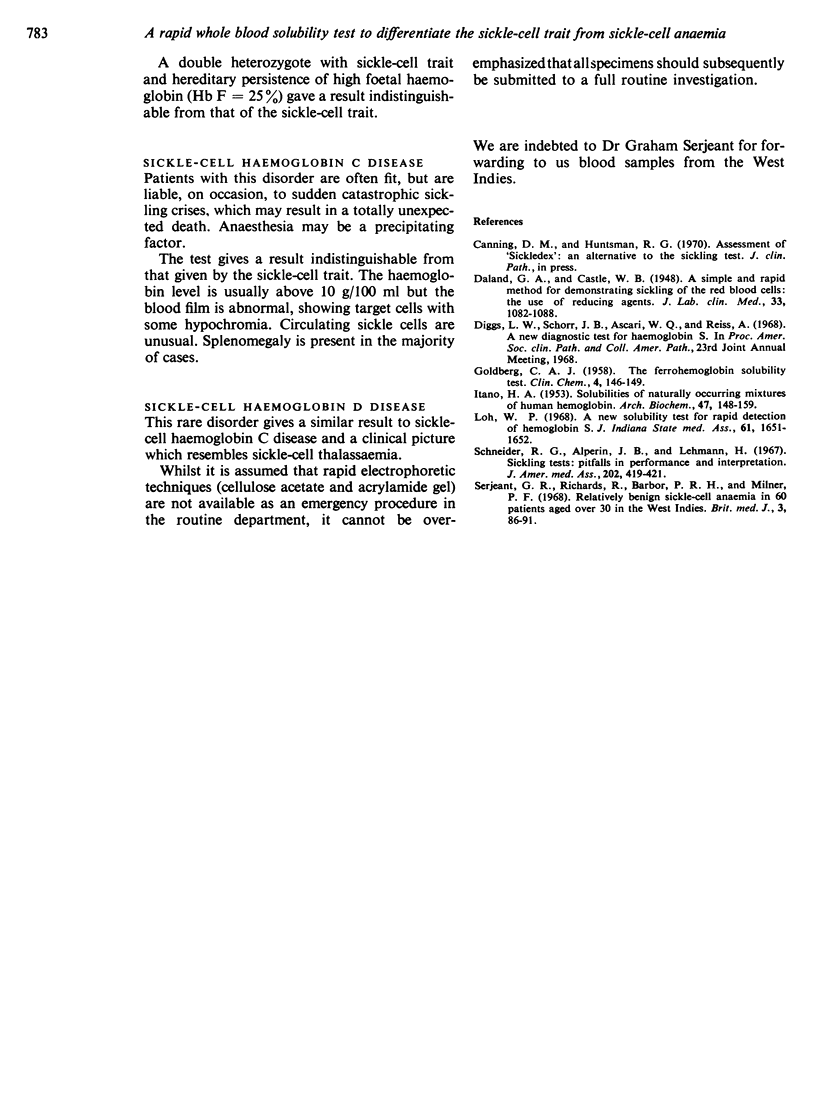Abstract
A simple and rapid screening test which differentiates sickle-cell trait and sickle-cell anaemia is described. The test utilizes 0·1 ml of whole blood and is based on the low solubility of reduced sickle haemoglobin. Results intermediate between the sickle-cell trait and sickle-cell anaemia are obtained in unusual cases of sickle-cell anaemia with high foetal haemoglobin.
The need to supplement the results with haematological and electrophoretic techniques is discusses.
Full text
PDF


Selected References
These references are in PubMed. This may not be the complete list of references from this article.
- GOLDBERG C. A. The ferrohemoglobin solubility test; its accuracy and precision together with values found in the presence of some abnormal hemoglobins. Clin Chem. 1958 Apr;4(2):145–149. [PubMed] [Google Scholar]
- ITANO H. A. Solubilities of naturally occurring mixtures of human hemoglobin. Arch Biochem Biophys. 1953 Nov;47(1):148–159. doi: 10.1016/0003-9861(53)90444-5. [DOI] [PubMed] [Google Scholar]
- Loh W. P. A new solubility test for rapid detection of hemoglobin S. J Indiana State Med Assoc. 1968 Dec;61(12):1651–1652. [PubMed] [Google Scholar]
- Schneider R. G., Alperin J. B., Lehmann H. Sickling tests. Pitfalls in performance and interpretation. JAMA. 1967 Oct 30;202(5):419–421. doi: 10.1001/jama.202.5.419. [DOI] [PubMed] [Google Scholar]
- Serjeant G. R., Richards R., Barbor P. R., Milner P. F. Relatively benign sickle-cell anaemia in 60 patients aged over 30 in the West Indies. Br Med J. 1968 Jul 13;3(5610):86–91. doi: 10.1136/bmj.3.5610.86. [DOI] [PMC free article] [PubMed] [Google Scholar]


